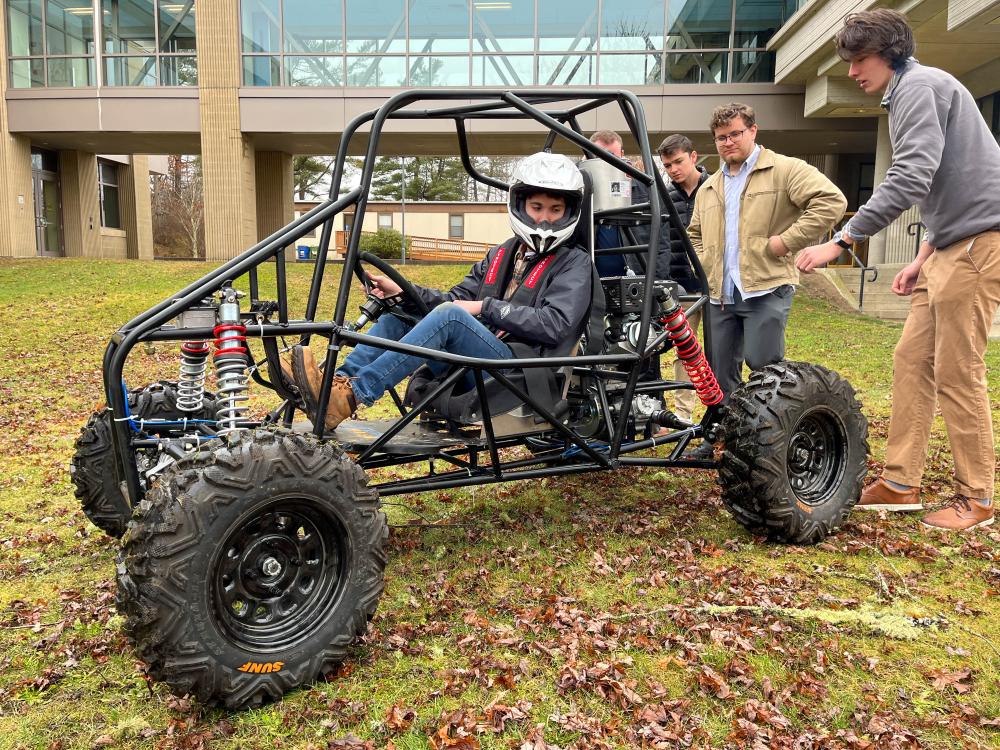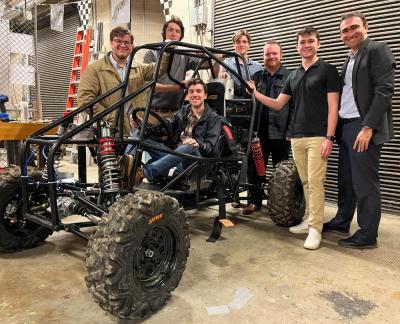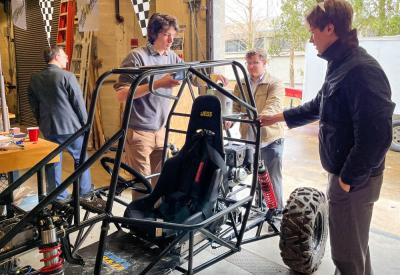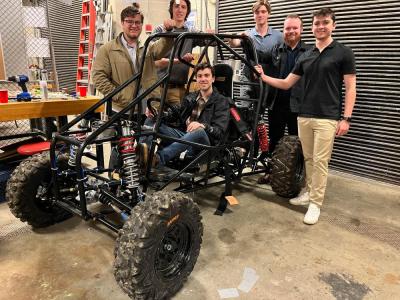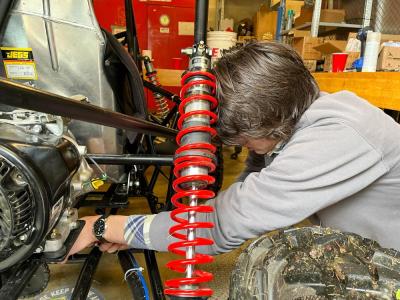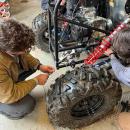UMass students build off-road ‘Baja Car’ for California competition
A team of UMass Dartmouth engineering students is putting together their road trip playlist. It’s a long ride to California, and they’ll need all the distraction they can get in their journey to the West Coast. From Brazilian music to The Beatles, the playlist covers a little bit of everything.
“It’s a 44-hour drive and we don’t want to listen to the same song twice,” said team leader Cameron Fitton.
For the past six months, the students have been building an all-terrain vehicle they’ve nicknamed the “Baja car.” About the size of a dune buggy, the Baja car is designed as a recreational, single seat vehicle for the off-road enthusiast.
Come late April, the team will be loading the Baja car into a trailer and hauling it 3,000 miles to Goreman, California where the car will be put to a series of grueling tests against rival student engineering teams from across the world. Taking place in Goreman’s rocky, sun-scorched desert, the cars will be tested on their endurance and off-road capabilities.
This will be the first time in a decade that UMass Dartmouth has entered the competition hosted by the Society of Automotive Engineers.
The team of UMass engineering students took their Baja car out for a test drive on Tuesday, March 5. Josh Rego has the distinction of being the Baja car’s driver. The carburetor has been running a little rich, Rego said, and it needs some tuning before it reaches full performance.
“It handled pretty well,” Rego said of a recent test drive. “We weren’t able to get it full throttle, yet. I just wanted to make sure everything’s working first before we really rip on it. But so far so good.”
Other than the engine, the UMass students have built the Baja car from the ground up, welding and constructing many of the parts in their campus workshop.
The car began three years ago in 2021 as a senior class project. It’s been passed down through the years from one class to the next, with each team adding something new.
The goal for this year’s team has been getting the car in top shape for the competition, an overwhelming task considering the exhaustive list of rules and specifications that the car needs to meet.
“There’s still a lot of work we have to do on this as well as optimizations to make sure it performs as well as possible,” Elias Medeiros said. “We just got this driving. Yesterday was the most successful day of driving it we’ve had so far. Two weeks ago, it was just a roll cage.”
And it hasn’t been cheap. Students estimate that some $30,000 has gone into the car over the past three years, not including the cost of labor. The project is funded and sponsored by the American Society of Mechanical Engineers. Friends and families have also contributed to the project, Fitton said.
As the competition draws near, the team is streamlining the car to make it as lightweight and durable as possible.
“We have gone through it and had it put together and taken apart like a million times,” Medeiros said.
The car still needs some finishing touches. Body panels need to be added to the roll cage to protect the driver and an electrical system needs to be added for the brake lights.
“It’s still kind of scary looking at how much we have to do,” Medeiros said. “We’re at a good place now, and I think we’ll definitely be able to get all of it done.”
The car is a practical component of Professor Hamed Samandari’s senior design class. Other than keeping the team on schedule and giving them general advice, Samandari is leaving it to the students to build the car.
“These students, they do everything together,” Samandari said. “So now they have a feeling of the community. They help each other, they go through all of the process together.”
Trial and error is all part of the hands-on experience, Samandari said. On Tuesday’s test run, the team had to push the car back to the shop after a mechanical hiccup.
“You do the calculations, you think it works, you design it, but then you start testing it and see ‘Ok, I need to make changes,’” Samandari said.
Building the car is as much a part-time job as it is a student project. Senior Andrew Boardmen has been working out the kinks in the car’s steering system, spending as much as 20 hours a week in the workshop.
“I spent two hours working on it in the middle of the night, basically in my pajamas, just trying to get this thing ready,” Boardmen said. “It’s gonna be a great story to tell when I’m older.”



